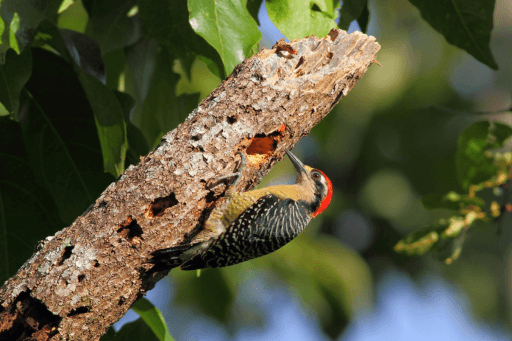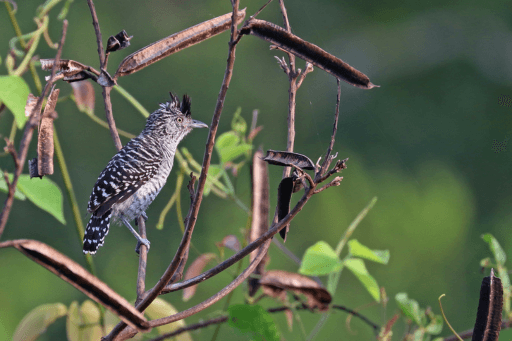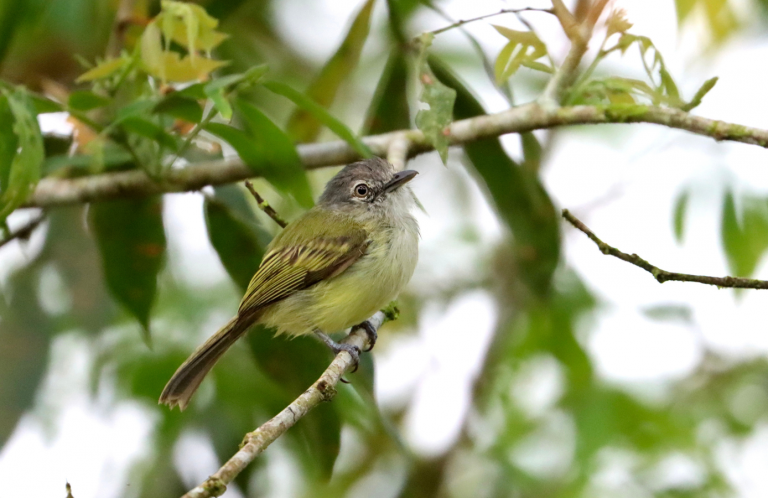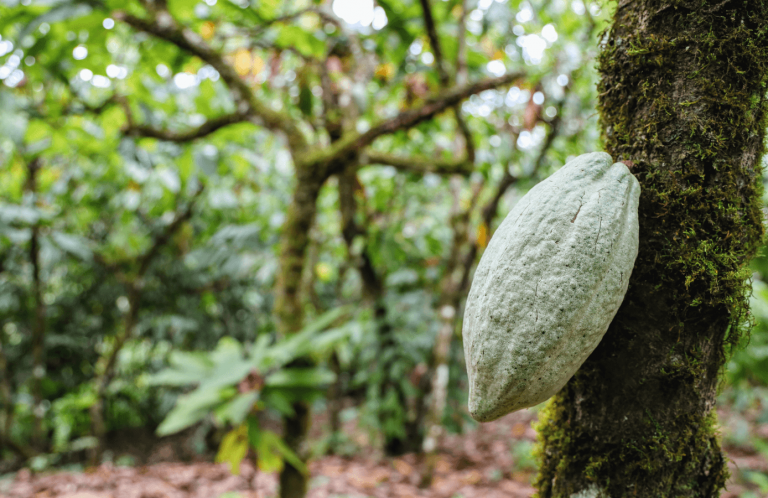BirdsPlus Index: A Simple and Innovative Tool for Measuring Biodiversity on Working Lands
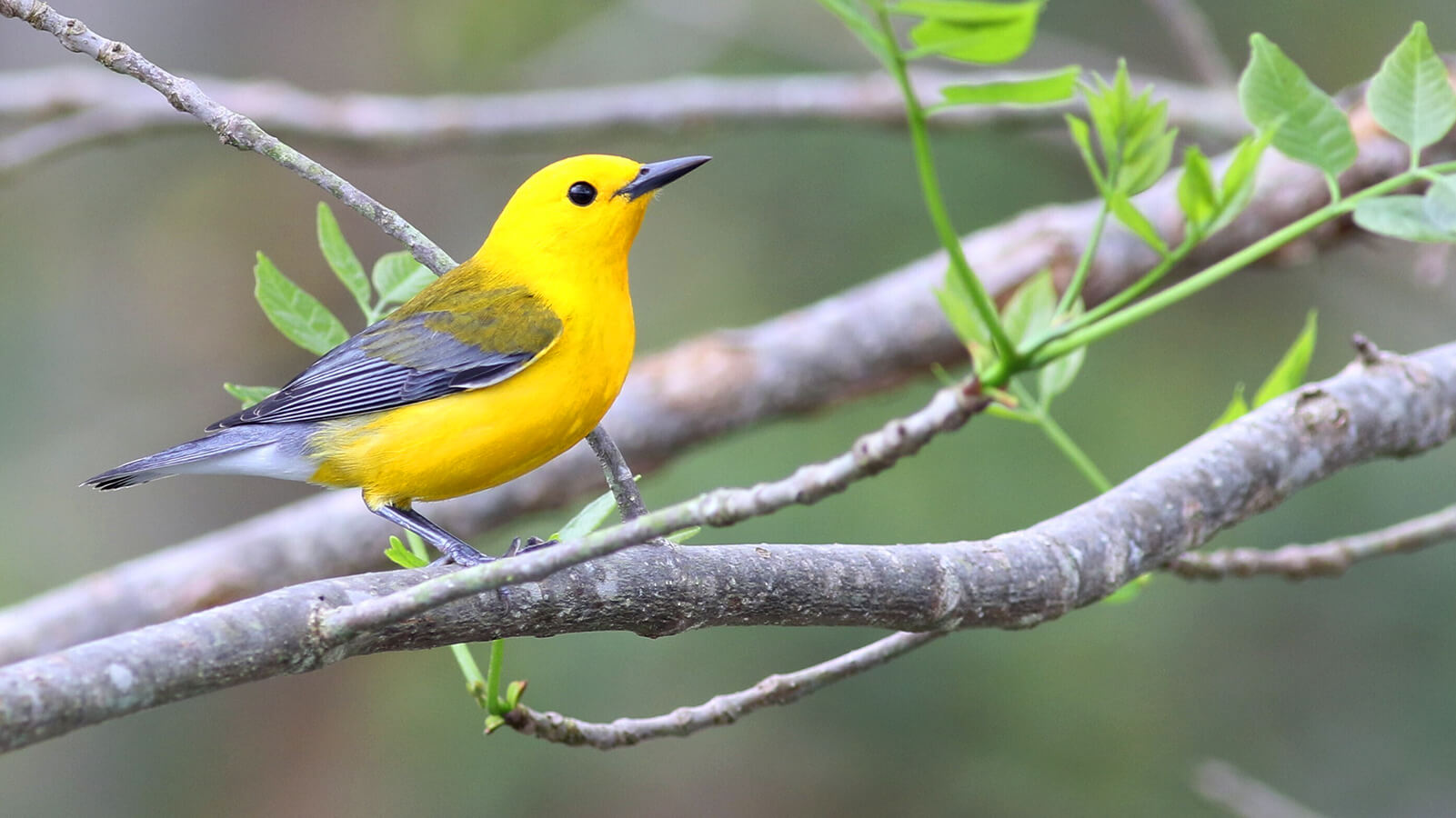
In a mixed rubber and native tree plantation in Costa Rica, a Wood Thrush chuckles from a low, sheltered branch. Meanwhile, a Prothonotary Warbler chips from its perch over a nearby stream, and the call of a Black-cheeked Woodpecker pierces the forest air. With the right tools and expertise, the separate threads of each of these calls can weave a rich tapestry that provides a useful image of the area's biodiversity.
American Bird Conservancy (ABC), in partnership with Arbimon, an organization focused on biodiversity monitoring through acoustics, is developing a new tool we call the BirdsPlus Index to harness this incredible power of birdsong to provide information about the biodiversity of working lands in Latin America and the Caribbean. Such places, when managed correctly, provide vital habitats to struggling migratory species on their nonbreeding grounds. Using audio recording devices, cutting-edge birdsong recognition models, and a novel formula, the index will provide a simple number that corresponds to the biodiversity and conservation value of a given site, such as a coffee farm or cattle ranch.
The BirdsPlus Index will play an essential role in ABC's BirdsPlus program, enabling the organization to rigorously monitor biodiversity changes over time in working lands supported by the BirdsPlus Fund in a manner that is both affordable and user-friendly. The index will be an alternative to more traditional monitoring methods that are typically more expensive and time-consuming, providing a way for the private sector, investors, governments, and NGOs to measure biodiversity benefits of best management practices using the sonic tapestry woven by birdsong.
“Birds can serve as great indicators of how biodiverse a site is, telling us much about the conservation value of an area. We hope the BirdsPlus Index will make it easier to use bird vocalizations for this purpose.” said Daniel J. Lebbin, Vice President of Threatened Species at ABC.
Eavesdropping on Birds from a Distance
Traditional methods of measuring biodiversity have typically been expensive and challenging, involving meticulously counting plant and animal species during in-person surveys conducted by highly experienced professionals.
Well-intentioned project managers and investors who support sustainable projects have found it difficult to measure biodiversity in a consistent and affordable manner, which in turn has made it challenging to accurately measure impact. An easy, affordable, and reliable way to measure biodiversity over time is essential, and that is exactly what ABC seeks to provide with the BirdsPlus Index.
Birds, just by going about their lives, can play an invaluable role in helping humans understand the biodiversity of a particular area. They are the most diverse terrestrial vertebrates and most of them are highly vocal, making them relatively conspicuous compared to other animals. This also makes them fairly easy to identify in sound recordings, especially with the help of well-trained artificial intelligence (AI) models. Birds also reflect much of the non-bird biodiversity where they live, which is often harder to measure, through their varied diets and foraging habits.
New technology is making it easier, quicker, and cheaper than ever before to automate the identification of bird sounds from acoustic samples. Armed with audio recording devices and machine learning models, we can now simply stick a microphone in the field for a period of time and run the collected sounds through a trained sound-recognition system.
ABC is currently working with Arbimon, which has been developing song recognition for tropical birds in the Americas. “Arbimon is a leader in the field of using sounds to measure birds and other biodiversity for land conservation organizations and government agencies. We are looking forward to collaborating with them to further develop the BirdsPlus Index,” Lebbin said.
“Sound is an incredibly valuable resource for monitoring ecosystem health, as it can provide a wealth of information about the environment,” said Marconi Campos, Arbimon Chief Scientist. “By utilizing machine learning algorithms within our Arbimon platform, we can identify trends and patterns in bird species and communities that may indicate changes in the ecosystem.”
How it Works
Land managers and investors won't have to record audio or sift through data themselves. ABC and Arbimon will develop a system to collect data and give each project a simple score based on the birds present on the property. Then, that number can be compared to scores from past years or against other sites. ABC will also provide a reference score for each kind of working land, like a shade cacao farm, that projects can aspire to reach or exceed.
Sound recording devices will be placed at each site to gather baseline data. Then, Arbimon will use their sound identification software to determine which species are present on the landscape. The collection of species detected will be assigned a score based on a number of criteria.
One important element of the process will be assigning bird species into different foraging “guilds” based on what and where they eat. For example, the Tropical Kingbird is a widespread Aerial Invertivore, meaning it eats insects captured from the air while flying. The Barred Antshrike is another widespread bird that is an Understory Invertivore, meaning it eats insects low in forests or bushes. These two birds use different parts of the environment and sample different insects in their diet. They also call often, which makes them easy to record and identify.
“Birds are amazing at sampling other biodiversity through their diet by eating plants (such as their seeds, fruits, nuts, nectar, and other parts) and predating other animals (like insects, snails, worms, fish, reptiles, amphibians, small mammals, and other birds),” Lebbin said. “More complex or mature sites should not only have more bird species, but also a higher representation of these guilds utilizing a more diverse resource base provided by the environment.”
This guild system will be an important component of the BirdsPlus Index scoring system to use birds as indicators for overall biodiversity. Scores will also take into account other factors of conservation value, such as the presence of any globally threatened bird species.
The same site can be sampled or measured multiple times across many years to measure change, such as increased bird diversity as a site matures or best management practices are implemented.
Several pilot programs for this exciting effort will launch soon in Central and South America, with the full index to be rolled out in the next few years.
“We are eager to put theory into practice by developing the BirdsPlus Index to incentivize impact investments from the private sector and actions by landowners that improve habitat for birds,” Lebbin said. “This will be a powerful tool to further ABC's mission of conserving habitat for declining migratory bird species throughout the Americas.”
###
American Bird Conservancy is a nonprofit organization dedicated to conserving wild birds and their habitats throughout the Americas. With an emphasis on achieving results and working in partnership, we take on the greatest problems facing birds today, innovating and building on rapid advancements in science to halt extinctions, protect habitats, eliminate threats, and build capacity for bird conservation. Find us on abcbirds.org, Facebook, Instagram, and Twitter (@ABCbirds).
Media Contact
Jordan Rutter
Director of Communications
media@abcbirds.org





































